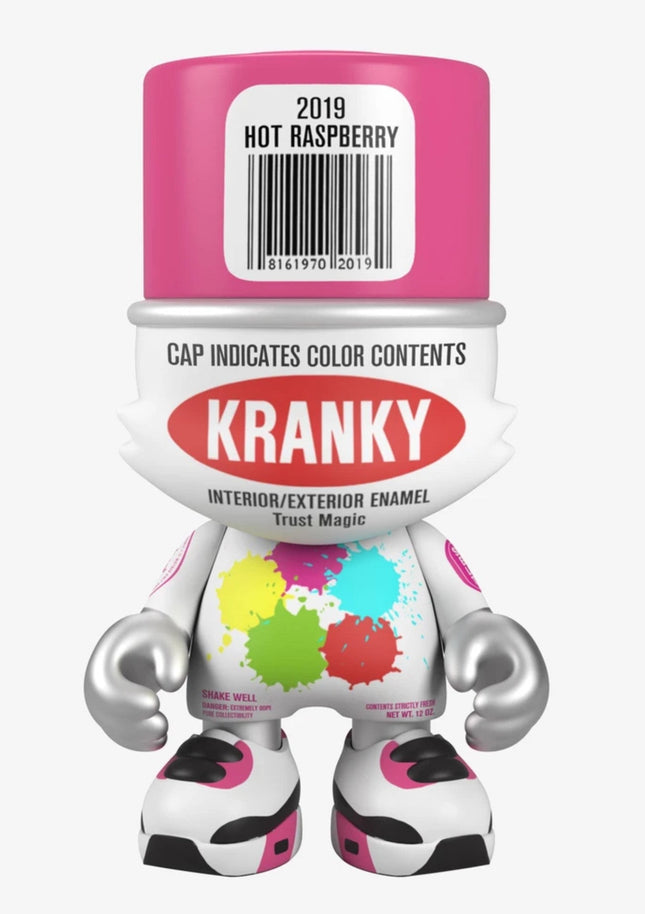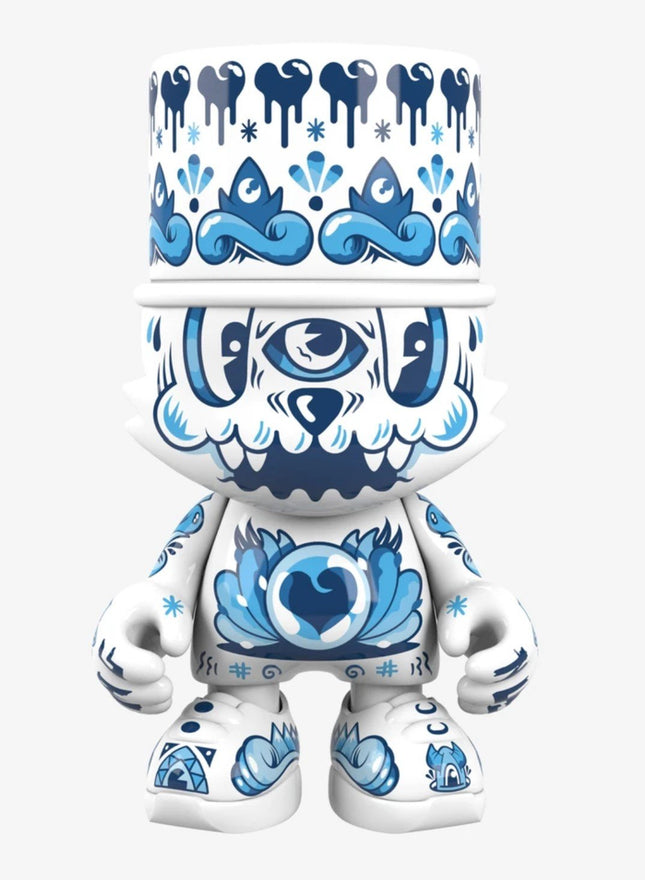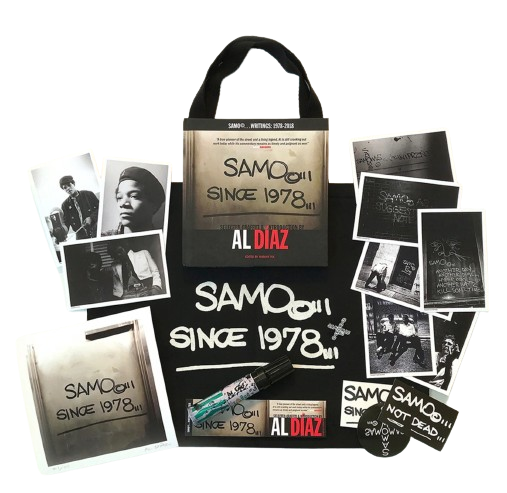
Street Art
-

Sket-One Hot Raspberry UberKranky SuperPlastic Art Toy by Sket-One
Hot Raspberry UberKranky Limited Edition Superplastic Janky Vinyl Art Toy Collectible Artwork by Modern Design Artist Sket-One. 2021 Limited Edition Limited Run UberKranky Janky Superplastic Vinyl Art Toy.
$503.00
-

Add Fuel Magnus UberKranky SuperPlastic Art Toy by Add Fuel
Magnus UberKranky SuperKranky Janky SuperPlastic x Sket One x Add Fuel Limited Edition Vinyl Artwork Street Art Toy Collectable Figure 2021 Limited Edition Artwork Size 10x15 New IN Box, 1st in series, 15 inches of blue-tiled mural Kranky.
$539.00
-

Al Diaz SAMO©…SINCE 1978... Deluxe Collectors Book Set Print by Al Diaz
SAMO©…SINCE 1978... Deluxe Collectors Set Archival Pigment Fine Art Limited Edition Print, Photos, Book & Marker on Fine Art Paper by Modern Pop Street Graffiti Artist Ali Diaz. 2018 Signed & Numbered Al Daiz Portfolio Art Set of Prints, Art Objects, Media & Photographs. The Samo©… Since 1978… Deluxe Collectors Set Includes The Following Items: A signed first-edition book with an exclusive inscription by Al Díaz and Mariah Fox. A signed and numbered archival print measuring 8 x 8 inches is a photograph by Al Díaz from circa 2018. An 11-piece archival print set of vintage SAMO© photography, each measuring 4 x 6 inches, with photographs by Al Díaz, Natalya Maystrenko, and Jane Burrell Yadav from around 1978/79. A signed paint marker that was used to create an original SAMO© piece of art. A hand-screened canvas tote bag, printed on each side, measuring 15 x 20 inches. An enamel cross pin. A sticker pack. A bookmark. A blue marker. A signed Letter of Authenticity. Historical Significance and Composition of the SAMO©…SINCE 1978... Deluxe Collectors Set Released in 2018, this limited edition portfolio by Al Diaz is a comprehensive assembly that includes various items, each rich with the essence of street pop art. A signed first edition book with an exclusive inscription provides insight into the SAMO© tag's inception and evolution, a narrative co-created with Mariah Fox. Accompanying the book is a signed and numbered archival print, an 8 x 8-inch photograph Diaz took, offering a visual narrative that complements the written word. The realm of modern street pop art and graffiti artwork is ever-evolving, often blurring the lines between an art piece and a historical document. The "SAMO©…SINCE 1978..." Deluxe Collectors Set is a prime example of this intersection, offering a tangible connection to the roots of street art as seen through the lens of influential artist Al Diaz. This set is not just an amalgamation of art objects; it's a capsule of cultural heritage that chronicles the rise of one of the most enigmatic tags in the history of graffiti. Further delving into the historical context, the set includes eleven archival prints measuring 4 x 6 inches, featuring vintage SAMO© photography by Al Diaz, Natalya Maystrenko, and Jane Burrell Yadav. These images capture the rawness of the late 1970s and early 1980s in New York, where SAMO© became a recognized symbol of rebellion and artistic freedom. Including a signed paint marker used to create an original SAMO© piece signifies the authenticity of the art-making process, bridging the past with the present. The Artistic and Collectible Value of Al Diaz's Work The Deluxe Collectors Set assembles art objects extending beyond prints and photographs. This eclectic mix includes a hand-screened canvas tote bag, an enamel cross pin, a sticker pack, and a bookmark. Each item is a piece of memorabilia and a slice of the artistic journey that Diaz has embarked upon. Notably, the set has a blue marker and a signed letter of authenticity, sealing its value as a collectible. Al Diaz's contributions to the graffiti art scene are deeply etched into the cultural fabric of urban art. His work, especially the SAMO© tag, co-created with the legendary artist Jean-Michel Basquiat, has become a symbol of street art's DIY ethos and provocative nature. This Deluxe Collectors Set does not merely reflect Diaz's artistic footprint; it serves as a conduit for the stories, the era, and the movement that SAMO© represents. Legacy of the SAMO© Tag The legacy of the SAMO© tag immortalized in this Deluxe Collectors Set is multifaceted. It's a testament to the power of words and images in the public domain, a reminder of street art's transitory yet impactful nature. The tag's cryptic messages once sparked curiosity and dialogue among passersby on New York's streets. Through this set, they continue instigating thought and appreciation among collectors and art enthusiasts. In essence, the "SAMO©…SINCE 1978..." Deluxe Collectors Set by Al Diaz is more than just an item of monetary value; it is an essential piece for anyone interested in the history and evolution of street pop art and graffiti artwork. Through this collection, Diaz cements his place in art history and invites others to explore and understand street art's profound impact on society and culture. As a limited edition of just 25 sets, it holds a unique place in the pantheon of modern art collectibles, embodying the spirit of a time when art took to the streets, challenging conventions and forever changing the face of urban expression.
$354.00




